Butterflies and Moths
Media

Species Types
Scientific Name
About 75 species in North America north of Mexico
Description
Missouri has 16 species of saturniid, or giant silkworm moths. Many of them are spectacular, including the cecropia, luna, buck, io, imperial, polyphemus, rosy maple, spiny oakworm, and royal moths.
Media

Species Types
Scientific Name
Hyalophora cecropia
Description
The cecropia moth looks a lot like butterfly ― but note its feathery antennae and stout, hairy body. This is the largest moth native to North America.
Media
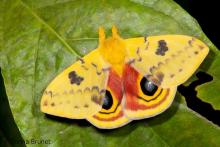
Species Types
Scientific Name
Automeris io
Description
The wings of male Io moths are usually yellow; those of females are reddish brown. When prodded, this moth parts its forewings to reveal hindwings with huge eyespots.
Media
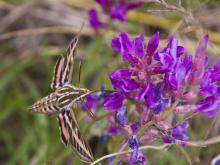
Species Types
Scientific Name
More than 50 species in Missouri
Description
Sphinx moths are usually large and heavy bodied, with a long, pointed abdomen. Members of this family often hover near flowers, feeding on nectar and looking like hummingbirds or bumblebees.
Media

Species Types
Scientific Name
Hypercompe scribonia (syn. Ecpantheria scribonia)
Description
The giant leopard moth is a beautiful large white moth. The forewings have numerous black spots, many with hollow centers. Some of the dark markings are iridescent blue in the light.
Media

Species Types
Scientific Name
More than 12,000 species in North America north of Mexico
Description
Learn about moths as a group. What makes a moth a moth? How are moths different from butterflies? What are the major groups of moths?
Media

Species Types
Scientific Name
More than 700 species in North America north of Mexico
Description
Learn about butterflies and skippers as a group. What makes a butterfly a butterfly? How are they different from moths? What are the major groups of butterflies?
Media
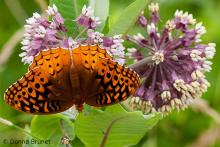
Species Types
Scientific Name
Speyeria cybele
Description
The great spangled fritillary is common and easily recognized. This glorious butterfly is often seen in city yards and gardens as it seeks flowers.
Media
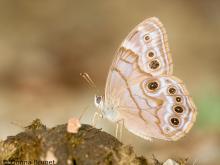
Species Types
Scientific Name
Enodia anthedon (syn. Lethe anthedon)
Description
The northern pearly-eye is grayish brown with dark eyespots. Of three pearly-eye species in Missouri, it is the most widespread.
Media
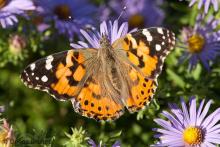
Species Types
Scientific Name
Vanessa cardui
Description
The painted lady is a delicately patterned butterfly found nearly worldwide. It migrates to Missouri in spring. There are several broods.
See Also


Media

Species Types
Scientific Name
About 1,500 species in North America north of Mexico
Description
Adult caddisflies are mothlike. Their larvae are aquatic and build portable, protective cases out of local materials, including grains of sand, bits of leaves and twigs, and other debris.
Media

Species Types
Scientific Name
Corydalus cornutus
Description
Adult eastern dobsonflies are huge and mothlike, with large wings and a weak, fluttery flight. The fiercely predaceous aquatic larvae, called hellgrammites, are well-known to anglers, who often use them as bait.
About Butterflies and Moths in Missouri
Butterflies, skippers, and moths belong to an insect order called the Lepidoptera — the "scale-winged" insects. These living jewels have tiny, overlapping scales that cover their wings like shingles. The scales, whether muted or colorful, seem dusty if they rub off on your fingers. Many butterflies and moths are associated with particular types of food plants, which their caterpillars must eat in order to survive.





















